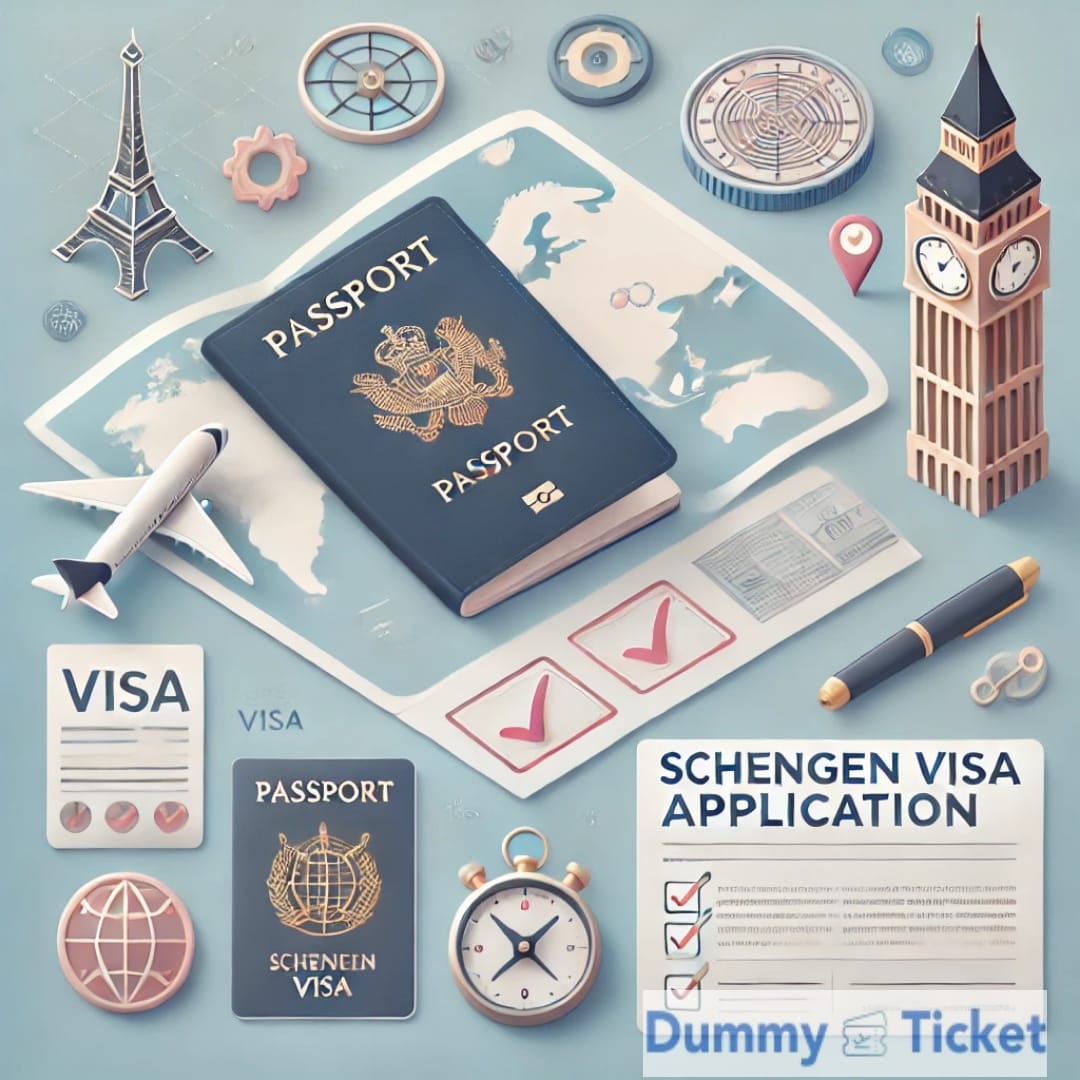The Indian visa is an official document that allows the holder to enter Indian territory according to the purpose specified in the visa. The types of Indian visas vary depending on the purpose of the visit, such as tourism, work, study, medical treatment, and others. Here is an overview of the types of Indian visas:
- Tourist Visa:
- Purpose: For tourists visiting India for leisure or tourism purposes.
- Duration: Typically ranges from 6 months or less.
- Requirements: Round-trip Dummy flight Ticket, proof of financial capability, a copy of the passport, and a passport-sized photo.
- Employment Visa:
- Purpose: For working in India.
- Duration: Usually ranges from 6 months to 5 years.
- Requirements: A job contract from an employer in India and proof of professional qualifications.
- Student Visa:
- Purpose: For studying at recognized educational institutions in India.
- Duration: According to the duration of the academic program.
- Requirements: An acceptance letter from a recognized educational institution in India, and proof of financial capability to cover study and living expenses.
- Medical Visa:
- Purpose: For patients traveling to India for medical treatment.
- Duration: Typically short-term, but can be extended if necessary.
- Requirements: Documents confirming the need for medical treatment in India, such as a medical report.
- Business Visa:
- Purpose: For visitors traveling to India for business purposes, such as meetings, trade, and negotiations.
- Duration: Typically ranges from 6 months to 1 year.
- Requirements: An invitation from an Indian company or business entity, proof of financial status, and typically a letter from the employer.
- Transit Visa:
- Purpose: For passing through India on the way to another destination.
- Duration: Usually 3 days.
- Requirements: Proof of a flight booking to the next destination.
- e-Visa:
- Purpose: For tourism, business activities, and medical treatment.
- Duration: Typically 60 days.
- Requirements: Online application with passport and passport-sized photo uploads.
Steps to Apply for an Indian Visa:
- Fill out the application form: You can apply for the visa online through the official Indian embassy website.
- Prepare the required documents: This varies depending on the type of visa.
- Payment: Visa fees can be paid online or at the embassy, depending on the type of visa.
- Submit the documents: After filling out the application form, submit the required documents at the Indian embassy or consulate.
- Wait for approval: After submitting the application, it will be processed by Indian authorities.
Important Notes:
- Indian visas may be limited to a specific number of entries (single entry, multiple entries).
- It is recommended to apply for a visa well in advance of your travel to avoid delays.
Key Information About the Indian Tourist Visa
The Indian tourist visa is one of the most commonly issued visas for individuals wishing to visit India for tourism, cultural exploration, or visiting historical and religious sites. This article outlines the essential information regarding the types, requirements, and application process for this visa.
1. Types of Indian Tourist Visas
- e-Tourist Visa (Electronic Visa):
This visa is applied for online without the need to visit the embassy. It is available to citizens of many countries, including those in the Gulf region. - Stamped Visa (Regular Tourist Visa):
This is issued through the Indian embassy or consulate and is typically used for longer stays or when the e-Visa is not available to the applicant’s nationality.
2. Duration of the Visa
- Short-term visa: 30 days (double entry).
- Long-term visa: 1 year (multiple entries).
- Extended visa: 5 years (multiple entries).
Note: Each stay in India must not exceed 90 consecutive days.
3. Requirements for the Tourist Visa
- A passport valid for at least six months from the date of arrival in India.
- A recent passport-sized photo with a white background.
- A confirmed return or onward travel ticket.
- Proof of hotel booking or accommodation details in India.
- Payment of the visa fee (online for e-Visas or at the embassy for stamped visas).
4. How to Apply for the e-Tourist Visa
- Visit the official Indian visa website:
- Complete the application form.
- Upload the required documents (passport and photo).
- Pay the visa fee securely online.
- Wait for the approval email, typically within 3 to 5 business days.
5. Important notes to know before applying for an India tourist visa
- The tourist visa does not permit employment or academic study in India.
- Visa fees vary depending on the applicant's nationality.
- It is highly recommended to check the official website before applying, as regulations and eligibility may change.
Here are the most important advantages and disadvantages of a tourist visa in India
Advantages of a Tourist Visa for India
- Ease of Application (Especially for e-Visa):
One of the main advantages is the ability to apply for an e-Visa online. This option saves time and effort, as you can fill out the application form and pay the fees from the comfort of your home without needing to visit the embassy or consulate. - Multiple Entries Possibility:
Some types of tourist visas (such as the multiple-entry visa) allow visitors to enter and exit India multiple times during the validity period of the visa, providing flexibility for those planning multiple trips to India. - Flexible Validity Period:
Depending on the type of visa, travelers can obtain a tourist visa that is valid for different durations, such as 6 months or even longer. Some visas can also be extended if they need to stay longer. - Easy Online Application:
The e-Visa is a convenient option for tourists planning a short stay in India. Travelers can obtain the visa quickly (usually within 72 hours) with simple procedures. - Multi-Purpose Travel:
India is not only a tourist destination but also offers many cultural and business activities. The tourist visa for India can be flexible enough to allow for multiple purposes of travel during your stay. - Quick Processing:
The process for e-visas is usually faster than that for traditional visas, which helps accelerate travel planning.
Disadvantages of a Tourist Visa for India
- Restrictions on Work or Study:
An Indian tourist visa is strictly for tourism purposes. The holder cannot work or study in India, and violating these rules may result in legal consequences. - e-Visa Not Available for Everyone:
Although the e-Visa is a significant advantage, it is only available to travelers from certain countries and for specific purposes (such as tourism, medical treatment, or business). Some nationals cannot apply for this visa and must apply for a traditional visa, which requires visiting the embassy. - Limited Duration:
Tourist visas, especially e-Visas, typically come with a short validity period. This may not be enough for tourists planning a longer stay in India, requiring them to apply for an extension or return to their home country before re-entering. - The Process May Be Complicated for Some:
For those applying through the Indian embassy or consulate, gathering the required documents, such as proof of financial capacity or hotel bookings, can be challenging. Additionally, some applicants may experience delays in processing. - No Guarantee of Approval:
In some cases, the visa may not be granted even if all the requirements are met. Reasons such as failing to meet financial criteria or unclear travel intentions can lead to rejection. Therefore, applying for a tourist visa is not always a guarantee of approval. - Additional Costs:
Tourist visa fees for India can be somewhat expensive, especially if applying through the embassy. Furthermore, there may be additional costs, such as expedited visa fees or processing fees for traditional applications. - Complicated Requirements in Some Cases:
For travelers applying for a traditional visa, strict requirements may include submitting an invitation letter, proof of hotel booking, and documentation showing the applicant's financial ability to support their trip. These requirements can be challenging for some travelers, particularly if their plans are not fixed or clearly defined. - Limited Approval for Certain Nationalities:
Some nationalities may be ineligible for an e-Visa or may face difficulties obtaining a tourist visa, requiring them to apply through the Indian consulate or embassy.
The Indian tourist visa offers travelers the opportunity to visit this beautiful country and experience its diverse culture. However, like any visa type, it comes with both advantages and disadvantages. By considering the benefits, such as the ease of applying for an e-Visa, and the drawbacks, such as restrictions on work or study, travelers can make an informed decision about the most suitable visa for their travel plans. If you're planning a visit, make sure to understand all the requirements and restrictions related to the visa to avoid any unwanted surprises.
The Relationship Between Dummy Flight Ticket and Indian Tourist Visa
The relationship between Dummy flight Ticket and the Indian tourist visa is an important subject that travellers planning to visit India should understand. In some cases, a temporary flight booking may be a required document for obtaining the visa, while in other instances, it may be part of the strategy to confirm travel plans during the visa application process. Let's explore this relationship in detail:
What is a Temporary Flight Booking?
A Dummy flight Ticket is a flight reservation that can be canceled or modified in the future with little to no additional costs. This type of booking is primarily used when applying for tourist visas or other visas that require proof of travel on a specific date, but without the need to purchase a non-refundable or final ticket.
The Relationship Between Dummy flight Ticket and the Indian Tourist Visa
A. Proof of Travel Intent
When applying for a tourist visa to India, you are required to submit certain documents to prove your intent to travel and return. Among these documents, the Indian embassy may request a temporary flight booking, which helps them confirm that you have a clear travel plan and intend to return to your home country after completing your tourist trip.
B. Requirements for the Indian Tourist Visa
In most cases, you must provide a round-trip Dummy flight Ticket as part of the visa documents. A temporary flight booking can be an ideal way to prove that you have already reserved a place for travel, without the need to pay for a non-refundable ticket.
The Dummy Ticket saves you from the costs of a final ticket and offers flexibility to modify or cancel the reservation in case of any changes to travel plans or visa approval.
C. Strategy to Minimize Financial Risk
When applying for an Indian tourist visa, you might face financial risks due to the cost of tickets, which can be non-refundable in case of visa rejection. By making a Dummy flight Ticket, you can reduce these risks since it allows you to cancel or modify the reservation without significant loss.
D. Proof of Stay Duration in India
When submitting a tourist visa application for India, you may sometimes be asked to prove the duration of your stay. A Dummy flight Ticket helps to establish the arrival and departure dates, serving as evidence of the planned duration of your stay. This can expedite the processing of your visa application.
Can a Dummy flight Ticket Be Used for All Types of Visas?
A Dummy flight Ticket is often required for tourist or visit visas, but in other cases, a final booking may be required, especially for business or study-related visas, where the applicant must provide detailed, finalized travel and accommodation information.
Can You Apply for a Visa Without a flight Ticket?
In some cases, travellers can apply for an Indian tourist visa without a permanent flight booking. However, the embassy may request a temporary flight booking to prove your travel intent and commitment to leaving at the specified time. In this case, it's important to ensure that the Dummy flight Ticket includes the correct arrival and departure dates.
When is it Preferable to Use a Dummy flight Ticket?
Before Obtaining the Visa: If you're in the process of applying for a visa and are still unsure about visa approval, a Dummy flight Ticket can be an important step.
In Case of Visa Delays: If you're on a tight schedule and wish to apply quickly, a temporary booking can help provide proof of travel at the correct time.
Based on the above, a Dummy flight Ticket is a smart option for an Indian tourist visa because it offers financial flexibility and helps meet key visa requirements, such as proving your travel intent and return date. If you're in the travel planning stage and need a visa, a Dummy flight Ticket can help reduce financial risks and speed up the application process.
The Indian tourist visa is one of the most popular visa types, allowing travelers to visit India for leisure, cultural exploration, or to visit friends and family. Applicants can obtain the visa either electronically (e-Tourist Visa) through an online application or by applying for a traditional stamped visa at the Indian embassy. The visa duration ranges from 30 days to up to 5 years, with options for multiple entries in some cases. Key requirements include a passport valid for at least six months, a recent passport-sized photo, confirmed hotel reservations, and a return flight ticket. The e-Tourist Visa is known for its simple application process and fast approval time, typically within a few business days. It is important to note that this visa does not permit employment or academic study in India. Applicants are advised to check the official Indian visa website for the latest updates and to ensure all required documents are properly prepared before applying.



